Dalnavert Museum: Small Mansion, Big History
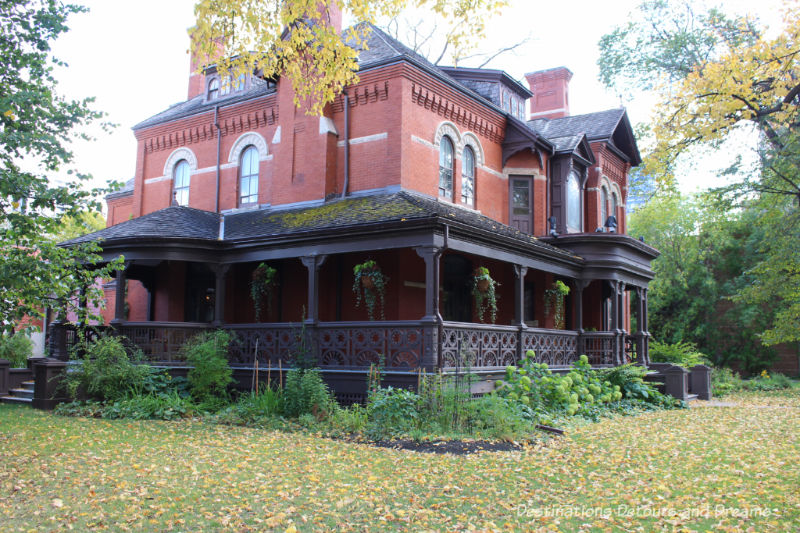
Dalnavert Museum in downtown Winnipeg, Manitoba offers a look into upper-class life of the late 1800s
Dalnavert was the former home of Hugh John Macdonald and his family. Hugh Macdonald, son of Canada’s first Prime Minister Sir John A. Macdonald, was a magistrate and a Premier of Manitoba. The house, restored and decorated in period style, is now a museum.
The Queen Revival House was built in 1895. Hugh Macdonald moved to Winnipeg from Ontario after the death of his first wife. Winnipeg was booming. Hugh may also have seen it as an opportunity to get out from under the shadow of his father. He lived in Dalnavert with his second wife Agnes, their son Jack, and his daughter Isabella from his first marriage. Hugh had been encouraged by his father to become a lawyer. He was a well-respected lawyer. My tour guide said the same could not be said for his father, whose partners were not happy with Sir John’s neglect of the business to pursue politics.
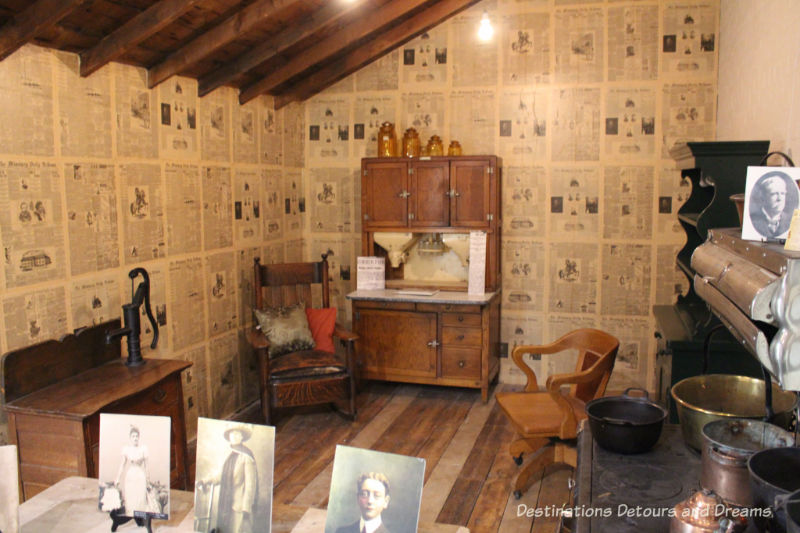
The first room one enters on a tour of the house is the summer kitchen. The stove was moved here in the summer and back into the main kitchen in the winter. Old newspaper articles cover the walls. The wood in the room is original. When I entered this room on a late September day, a pleasant wood smell greeted me. My tour guide told me the boiler had been turned on two days prior and the wood was reacting to the new heat by releasing that aroma.
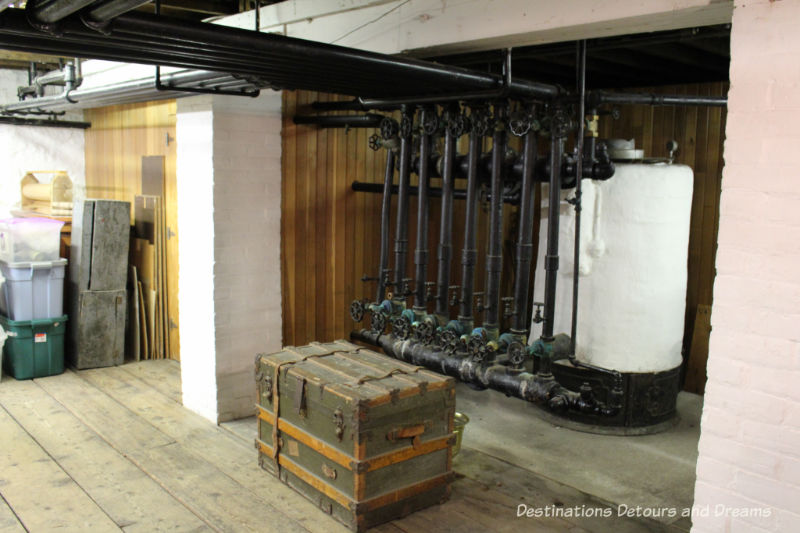
The original coal-fueled boiler has been replaced with a gas boiler, but the the original piping and radiators are still in use today. The basement floor has wide wood planks with small cracks, which allowed water to drain when the Assiniboine River rose and got into the basement. Underneath is dirt and a layer of gravel.
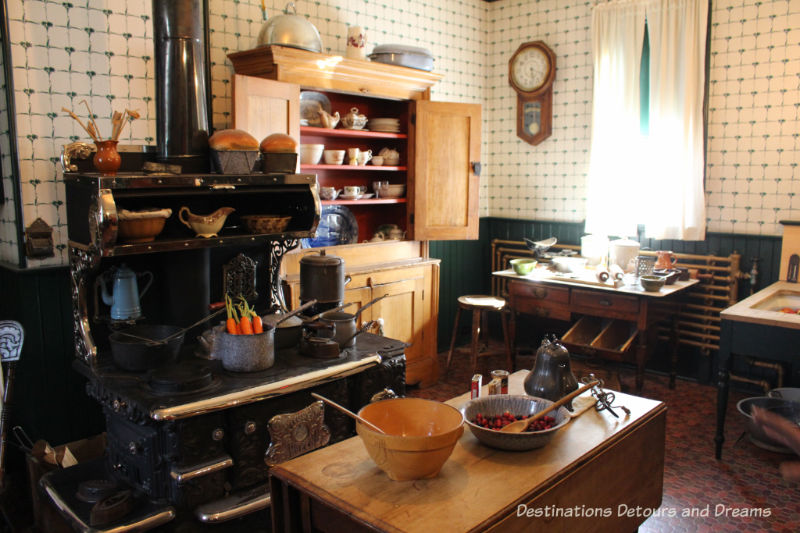
The house had all the modern conveniences of the day. It had a coal boiler, hot running water, and electricity. An intercom system linked 16 rooms to the kitchen with bells to summon servants. A speaking tube connected the kitchen to Mrs. Macdonald’s dressing room so servants could find out what she wanted before running to her room. There was a telephone. At that time, there was no dialing. Pick-up connected you to an operator.
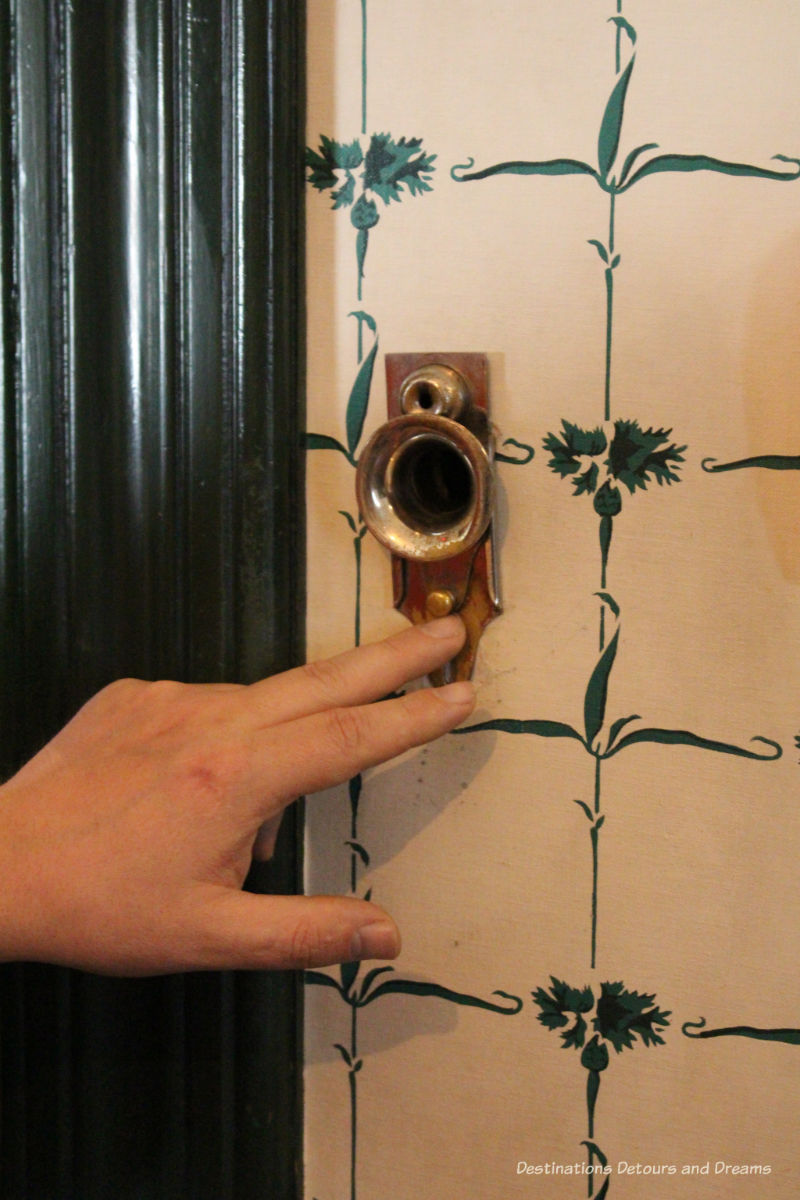
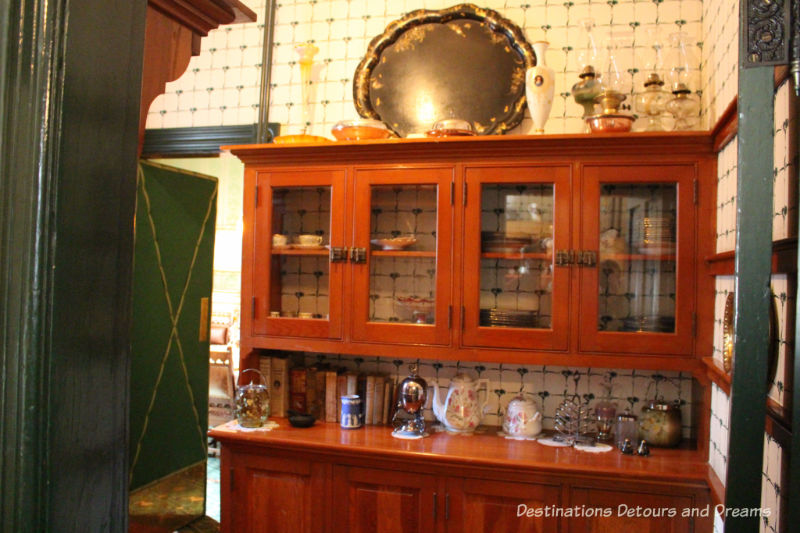
The house has a servery between the kitchen and the dining room. This was used to set out food prior to serving and to store the dishes away from the kitchen so they’d stay cleaner. It was not called a butler’s pantry. The Macdonalds never had a butler.
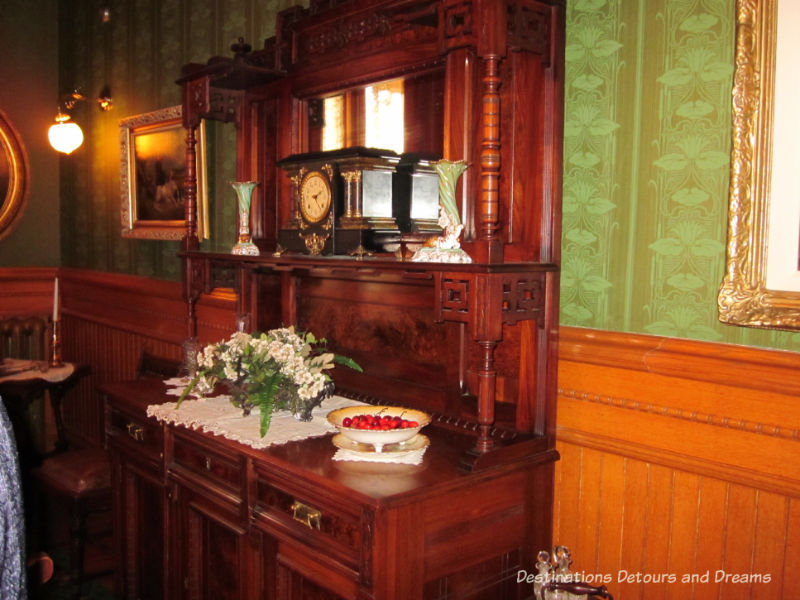
The dark wood pieces and dark tones of the dining room were typical of the late Victorian era. The wallpaper is a reproduction of what was discovered on the walls when layers of paint and wallpaper were peeled away during restoration. Very few of the furnishings in the museum actually belonged to the Macdonalds, but they are appropriate to the period and represent what the house would have looked like at the time.
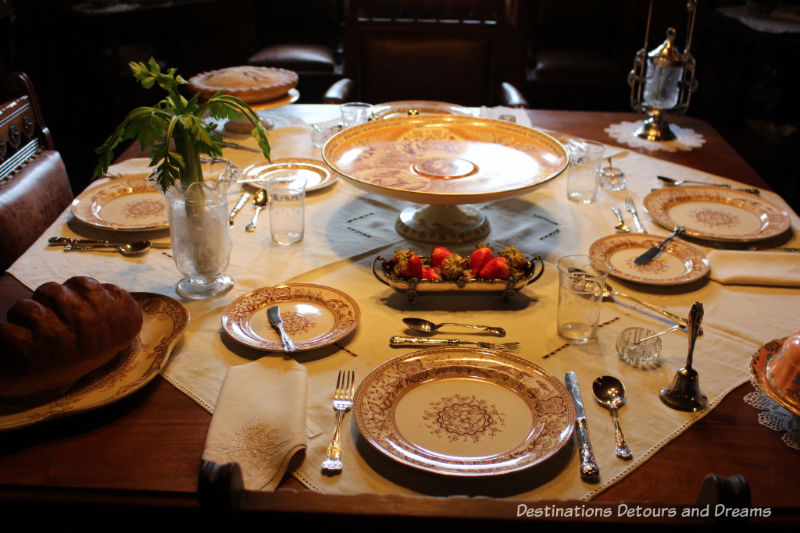
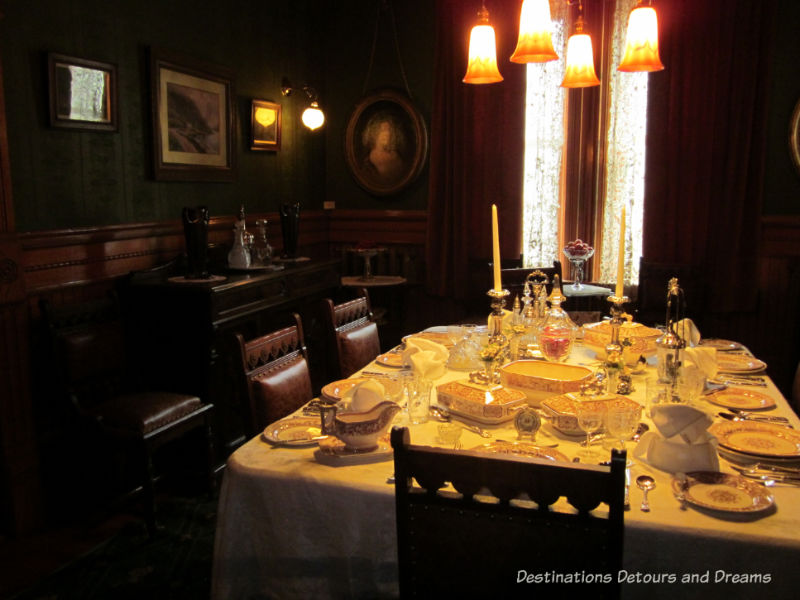
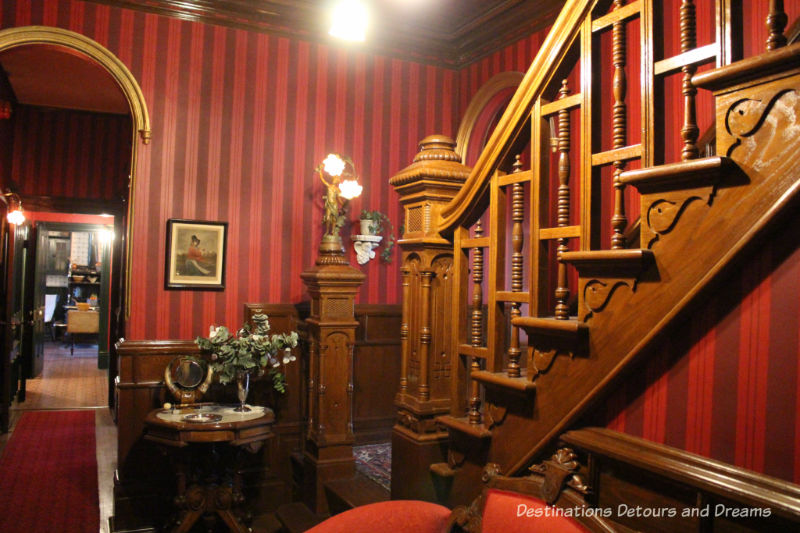
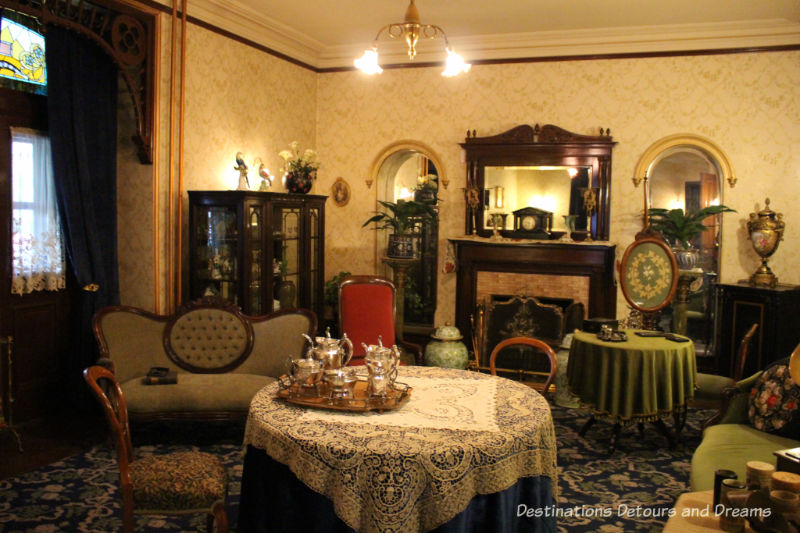
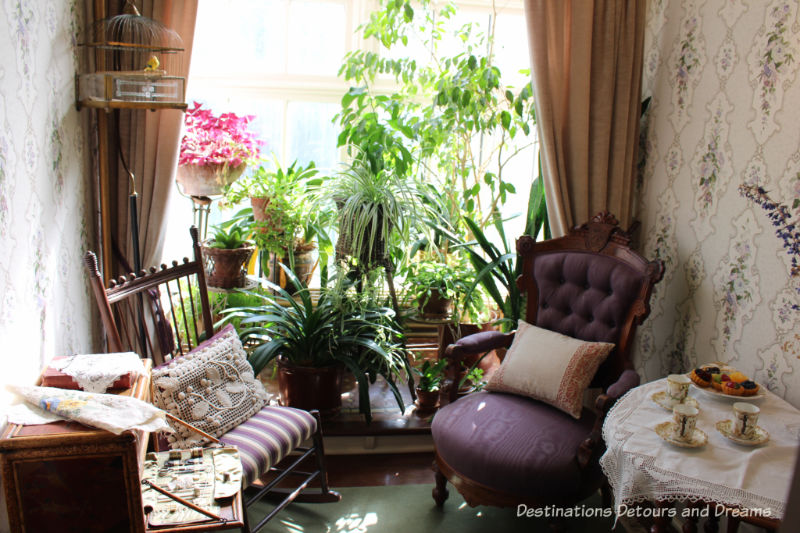
The small sunroom is my favourite room in the house. It is where Agnes Macdonald spent time, writing letters or entertaining lady friends over tea. Beside it, at the front of the house is Hugh Macdonald’s study. He had a law office where he would work with his clerks. But when he met with clients, it was either at their homes or in his home office.
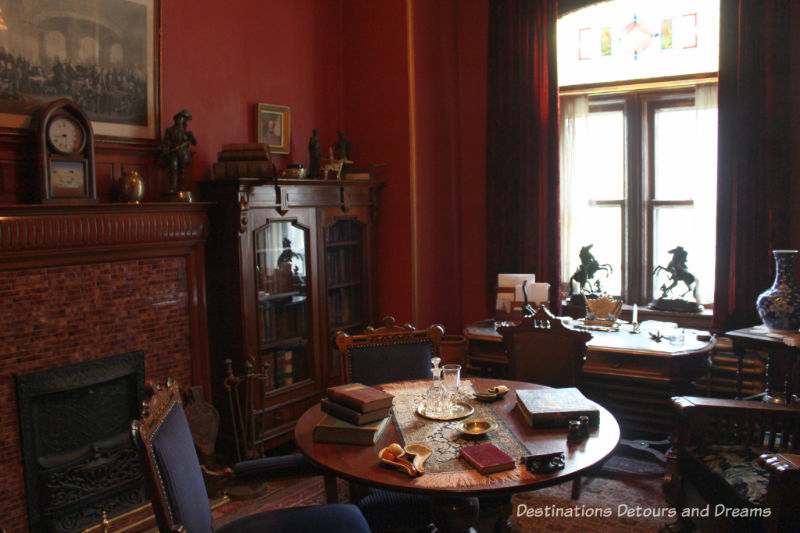
When Hugh John Macdonald worked as a police magistrate, the majority of crimes he dealt with were robbery or vagrancy. Vagrancy was a big issue at the time. Macdonald was known to bring vagrants home and house them in his basement until they could find a place to stay. There were few social services or government programs. It was up to the wealthy to take care of the less fortunate. Hugh John Macdonald was known for his compassion. He would often suspend sentences and find jobs for youth. Macdonald Youth Services, which provides foster and group care, community support services, and transition services, was established in 1929 and named in honour of Hugh John Macdonald. Macdonald displayed a less kind side when he served as magistrate during the 1919 General Strike and sent immigrants arrested during the strike to an internment camp from which they were eventually deported. In 1913, he was made a Knight Bachelor and became Sir Hugh John Macdonald.
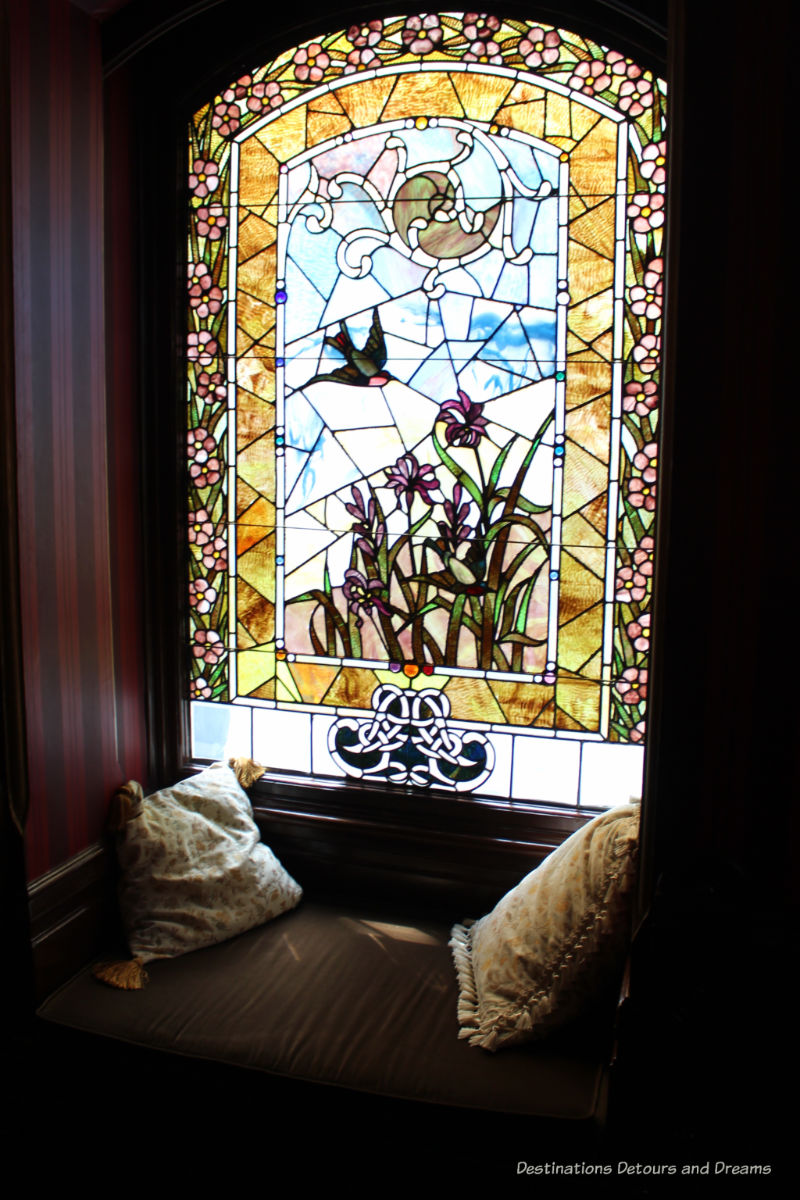
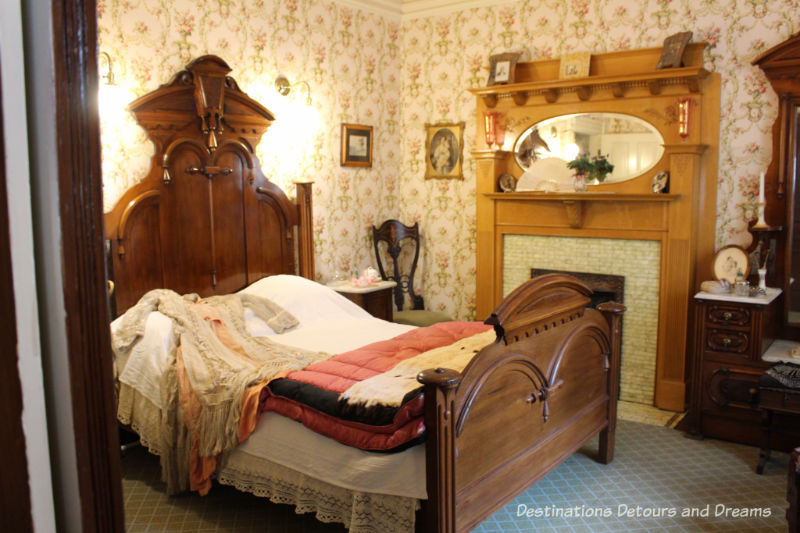
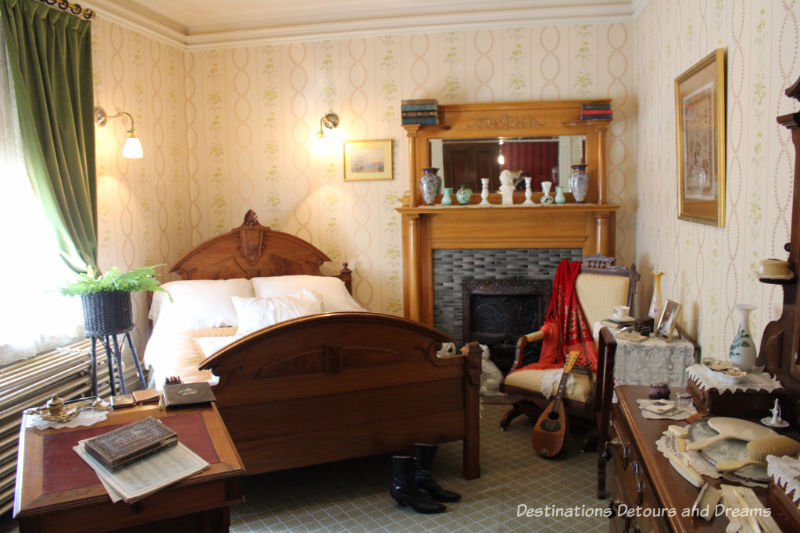
Hugh’s daughter Isabella, who was most commonly referred to as “Daisy”, was already a young woman of seventeen when the family moved into Dalnavert. She had a parrot as a pet and was an unconventional Victorian woman who loved fencing and pistol shooting. She played the piano and the harp and dabbled in acting. She was active in Winnipeg’s social scene. She married in 1915.
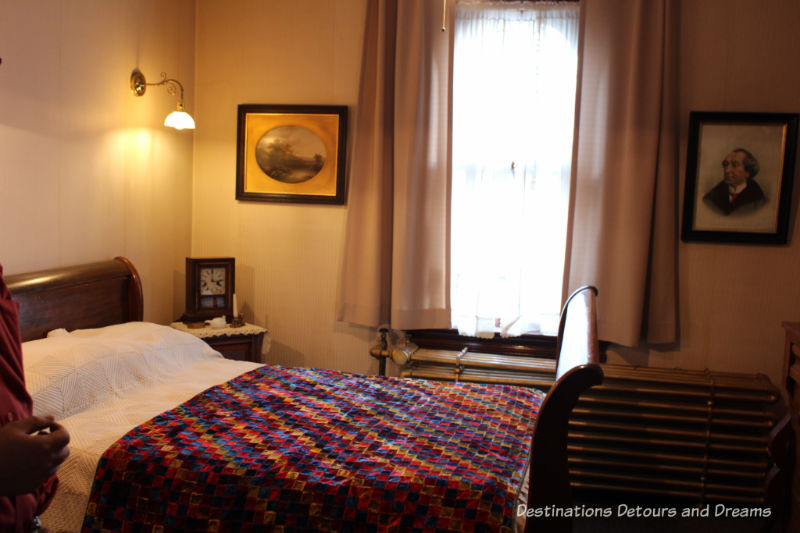
Hugh and Agnes’s son Jack was diagnosed with diabetes which was difficult to treat during the Victorian era. He was confined to his room at times. Other times he lived a normal, active life. He studied law at the University of Manitoba, but died before he could finish his degree.
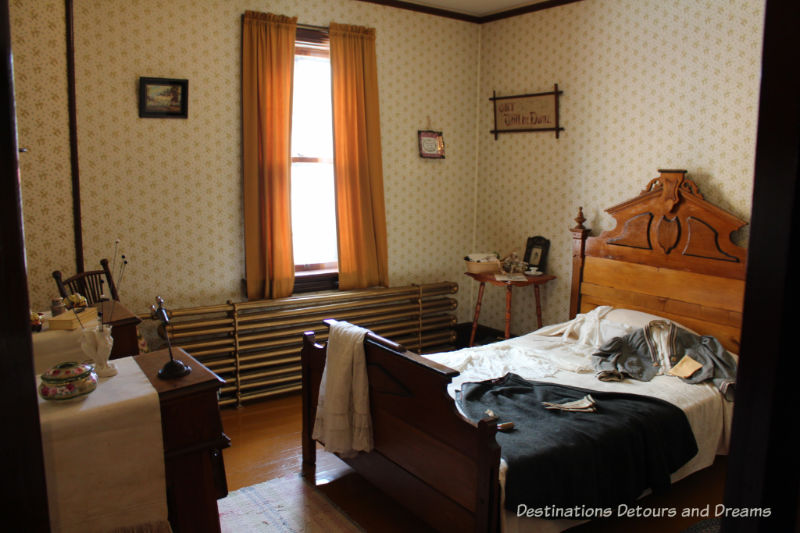
The family employed a cook and a maid who lived in the house. Their bedrooms at the back of the house were simpler than those of the family, but still spacious and comfortable for servants’ rooms. Given their positions with such a respected family, they would have had an elevated standing among their peers. They would also have been expected to conduct themselves with a certain decorum and represent the family well.
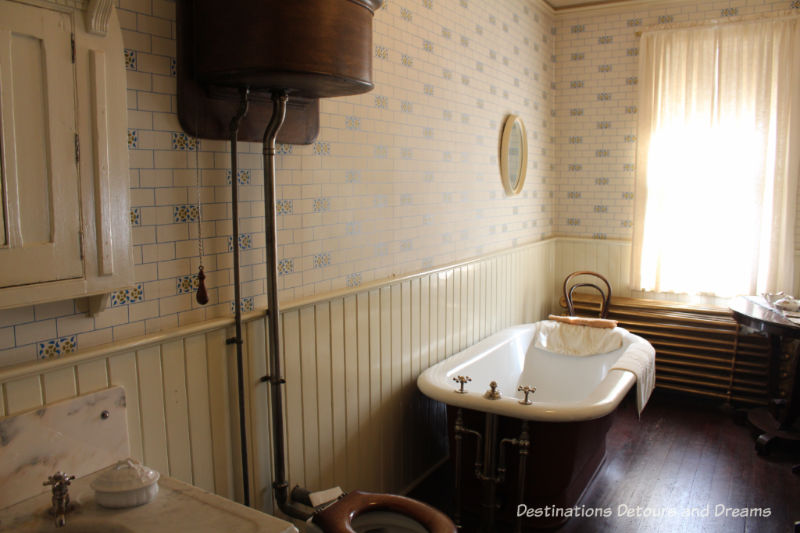
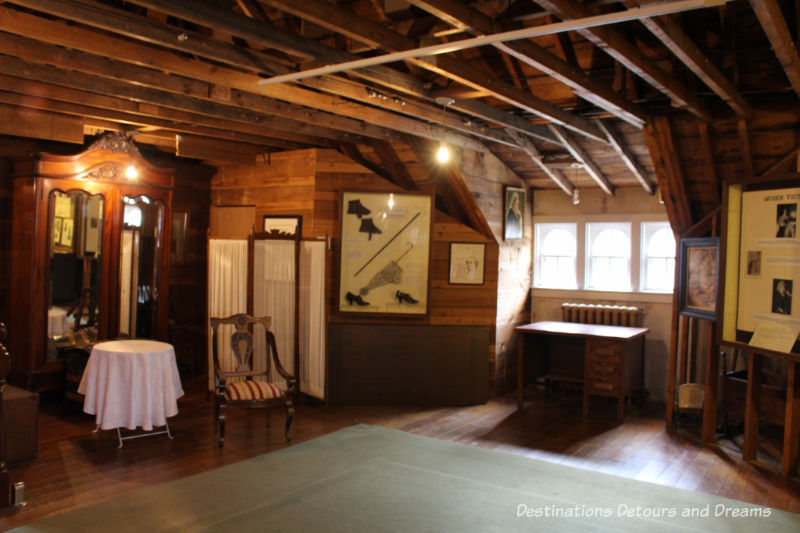
Hugh Macdonald died in 1929. After his death, the house was owned by several people who transformed it into a rooming house. In 1969, it was sold to a company who intended to make the grounds a parking lot. The Manitoba Historical Society bought the house from the development company. Restoration work cost $559,000 and took several years to complete. Much of the restoration money went to leveling and firming up the foundation. Although a solid house, gumbo shifting had taken its effect on the red brick, granite stones, and solid beams. The Society ran the house as a museum until 2013 when it closed the doors due to operating concerns. A non-profit group The Friends of Dalnavert Museum resurrected the museum in 2015 and continues to operate it today. Dalnavert was designated a National Historic Site of Canada in 1990. Volunteers maintain the heritage garden surrounding the house.
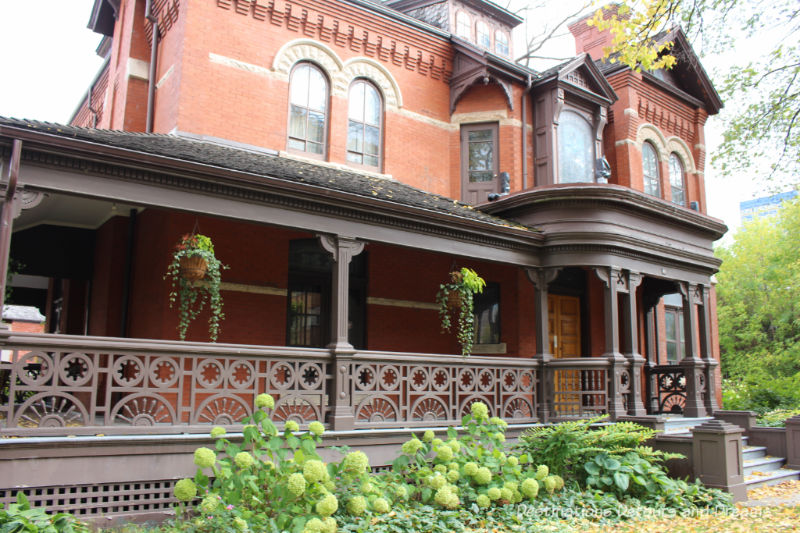
Dalnavert Museum is open afternoons Wednesday through Sunday. Tours take approximately forty-five minutes. Guides are happy to adapt the tours for visitors. Special events occur throughout the year, both in the house itself and the attached Visitor Centre at the back. Check the website for hours and upcoming events.
Never miss a story. Sign up for Destinations Detours and Dreams monthly e-newsletter and receive behind-the-scenes information and sneak peaks ahead.
PIN IT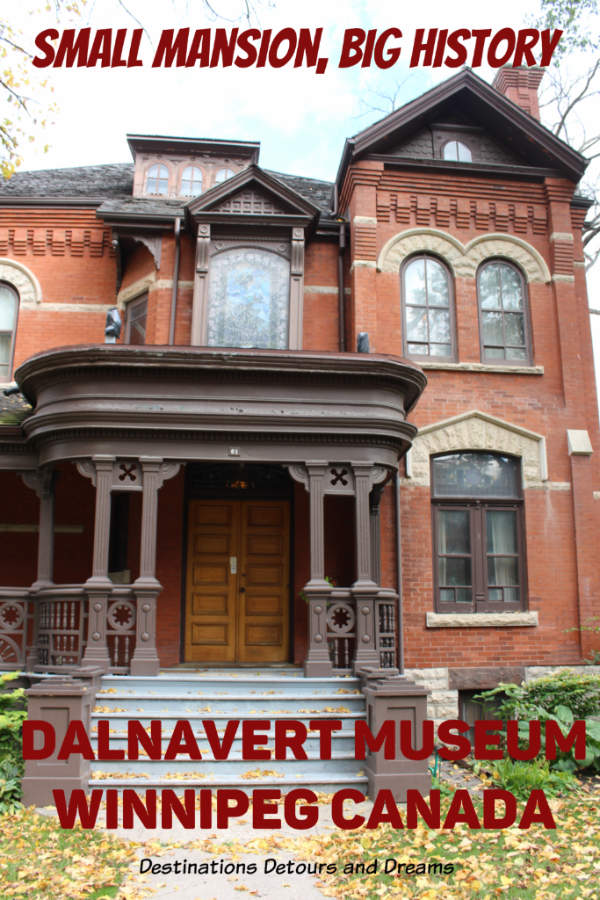

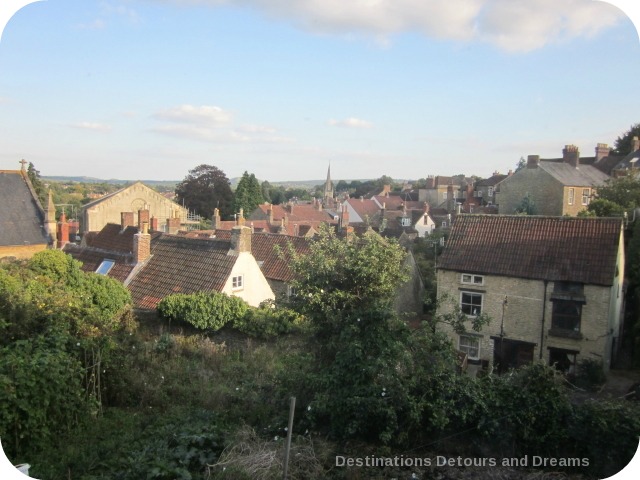
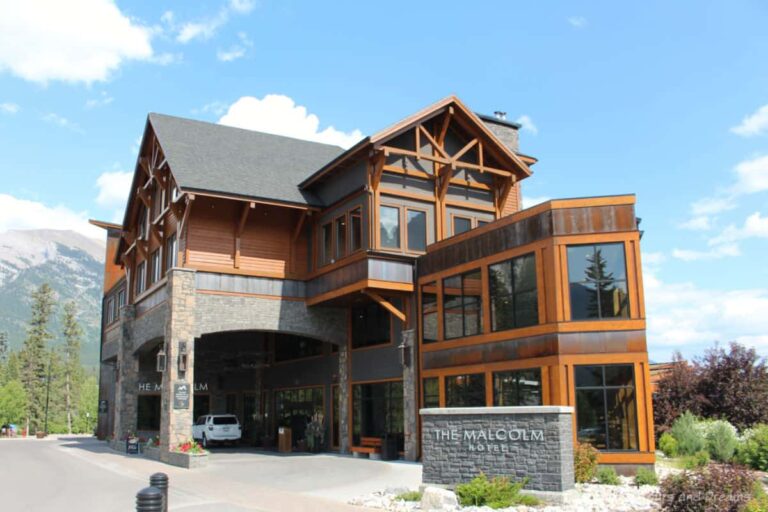




So glad this property was not destroyed and that it is lovingly maintained to preserve this time period.
Deb, I’m glad too. I was saddened when it closed its doors in 2013.
What a lovely house! I always enjoy going through old homes (in person and virtually) and getting a glimpse of what life was like a century ago. The furnishings are beautiful and it’s easy to imagine the family moving about from room to room. Living museums are such treasures and it’s wonderful to see that this beautiful home is being cared for. Anita
Anita, the house is well furnished with lots of detail to help create a feeling of the time and family life.
What a beautiful house. From the outside, with its porches, railings and grillwork, it looks like something you would see in the older towns in the southern U.S.
Ken, I love porches like this. They were certainly more prevalent in times past.
Such a charming museum which I would love to explore! That sun room looks so cozy, Donna!
Thanks Agness. I like to imagine my office in the sun room.
When I tour a lovely home like this, I always find myself wanting a parlor! Glad that it’s still standing and providing a historical glimpse.
RoseMary, this parlour has a lot to keep you entertained and some beautiful pieces as well.
The Dalnavert Museum looks so interesting! My favorite spot is the sunroom. I could be happy for hours there!
Patti, I am partial to the sunroom too.
I always enjoy old houses, especially when you can get an idea of the lives of the people who lived there. Isabella sounds like an interesting person!
Karen, Isabella does sound interesting as does the family in general. I’ve toured this house a few time and learn new tidbits about them each time.
I’ll be there in August…can’t wait
Mike, I hope you enjoy your visit.